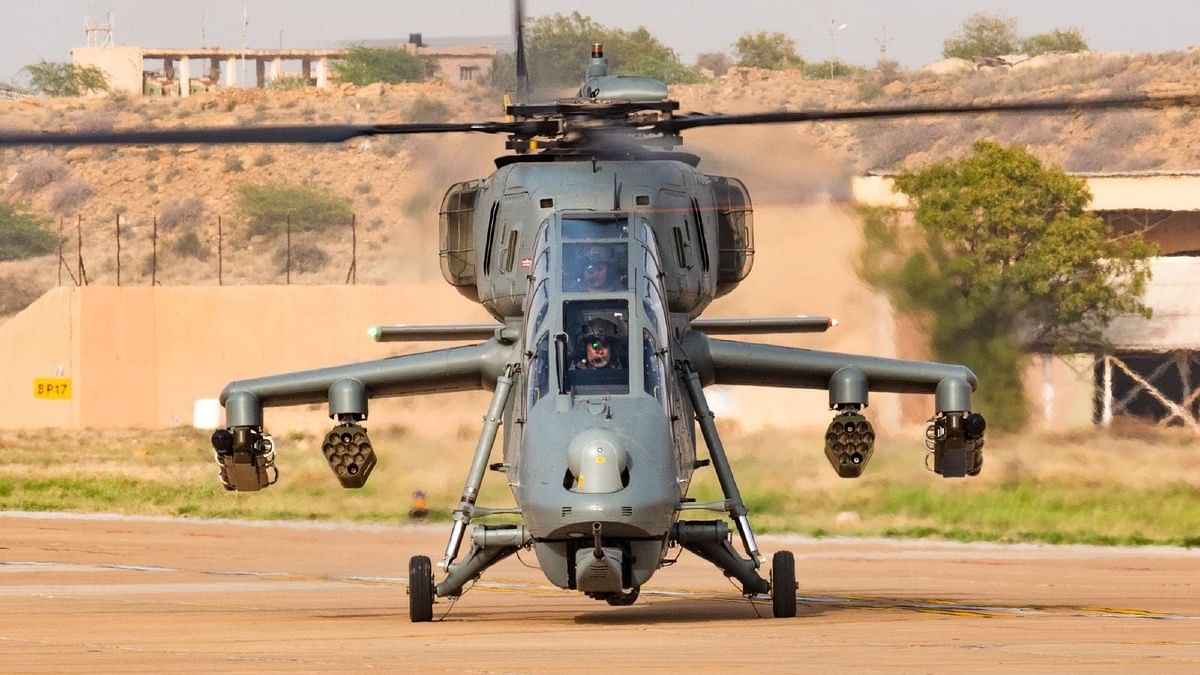SOURCE: RAUNAK KUNDE / NEWS BEAT / IDRW.ORG

In modern warfare, the role of attack helicopters has evolved significantly. The recent experiences in conflicts such as the Ukraine War have highlighted the vulnerabilities of advanced attack helicopter systems. As the Indian Army and Indian Air Force (IAF) plan to procure a significant number of indigenous Light Combat Helicopters (LCH), they are also focused on equipping these helicopters with advanced weapons and technologies to reduce vulnerability and increase their effectiveness on the battlefield.
Recent reports from the Ukraine War have raised concerns about the vulnerability of attack helicopters. Russian Ka-52 Attack Helicopters, known for their advanced capabilities, have been experiencing significant losses. These helicopters are becoming increasingly susceptible to short-range surface-to-air missile systems and modern air defence systems. Flying at low altitudes, once a successful tactic, is no longer as effective, and it has become imperative to enhance the protection and capabilities of attack helicopters.
To address these challenges, the Indian Army and IAF are collaborating with both public and private sector companies to develop and equip their indigenous Light Combat Helicopters (LCH) with advanced weapon systems and technologies.
The Indian Army and IAF are currently working on a substantial contract for 156 indigenous Light Combat Helicopters (LCH). This procurement is set to include 90 LCHs for the Army and 66 for the IAF, with an estimated cost of ?45,000 crore. This move is a crucial step in strengthening the capabilities of India’s attack helicopter fleet.
Enhancing the LCH’s Offensive Capabilities
One of the key objectives in improving attack helicopter capabilities is the development of long-range standoff weapons. Recent developments have seen the clearance for production of Helina (the Army version) and Dhruvastra (the IAF version), both of which are helicopter-launched variants of third-generation anti-tank guided missiles (ATGMs). These advanced ATGMs provide stand-off range, reducing the need for helicopters to engage targets at close range, where they are vulnerable to enemy fire.
Additionally, the IAF and Army have expressed their desire for the Defense Research and Development Organization (DRDO) to develop ATGMs with twice the range of the current ATGMs. This enhancement will further improve the standoff capabilities of attack helicopters.
Introducing Tube-Launched Loitering Ammunitions
To bolster the attack helicopter fleet, the development of tube-launched loitering ammunition is underway. These ammunitions offer a range of over 50-100 kilometres and can be used for air-to-ground strikes. Their cost-effectiveness and extended range make them valuable assets for taking out military infrastructure without the need to get too close to the target.
In response to evolving aerial threats, such as armed Unmanned Aerial Vehicles (UAVs), the Indian Army and IAF are considering the introduction of an air-to-air variant of the Very Short Range Air Defense System (VSHORAD) with infrared homing capabilities. These systems can be launched from helicopters and are designed to counter aerial threats effectively.
As the nature of warfare continues to change and adversaries become more technologically advanced, India must enhance the capabilities of its attack helicopters. The procurement of indigenous Light Combat Helicopters, combined with advanced weaponry and technologies, positions the Indian Army and IAF to meet the challenges of modern warfare effectively. These advancements not only strengthen national defence but also support the development of a robust and self-reliant defence industry in India.
NOTE : Article cannot be reproduced without written permission of idrw.org in any form even for YouTube Videos to avoid Copy right strikes. Websites doing illegal reproductions will get DCMA and Legal Notices.